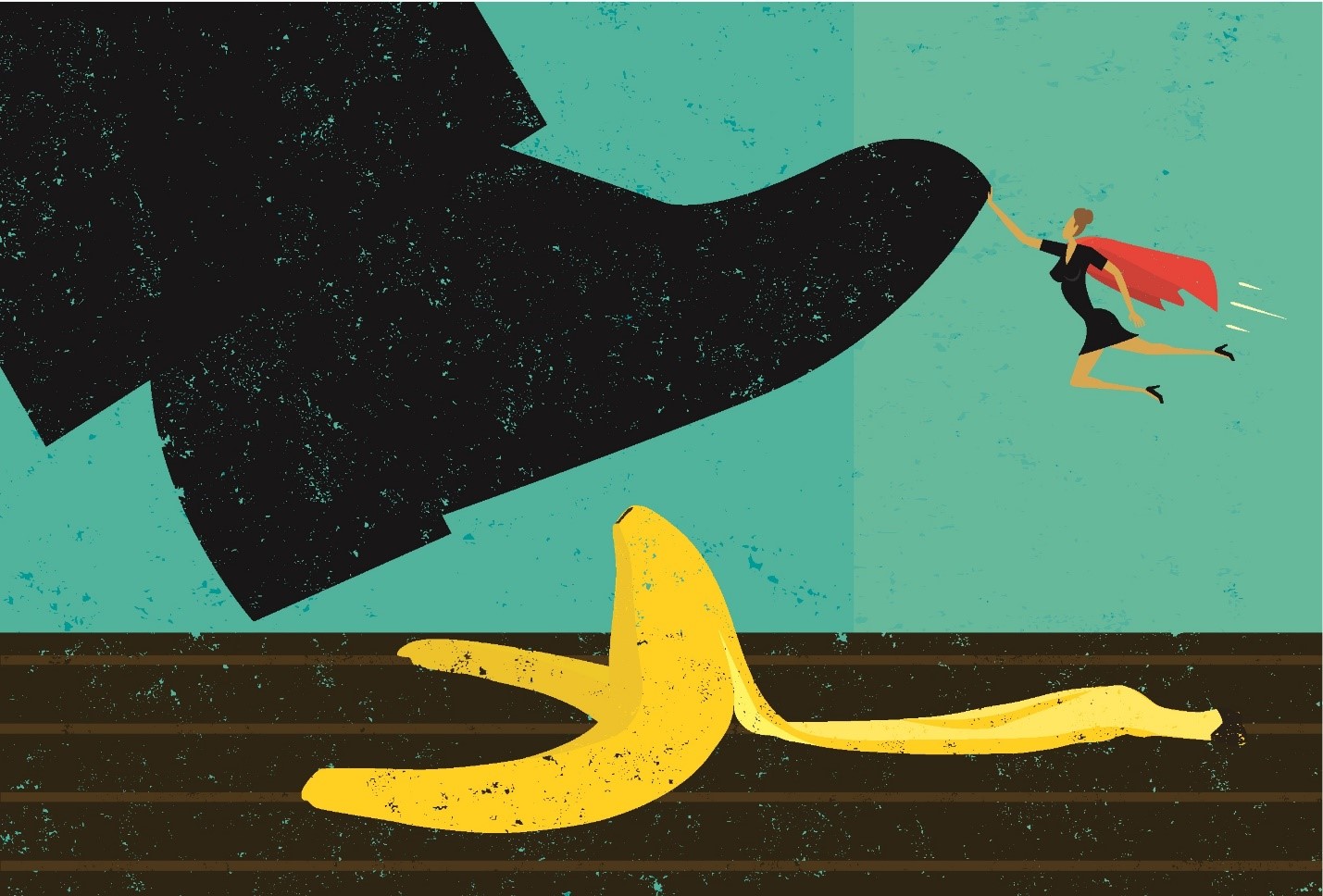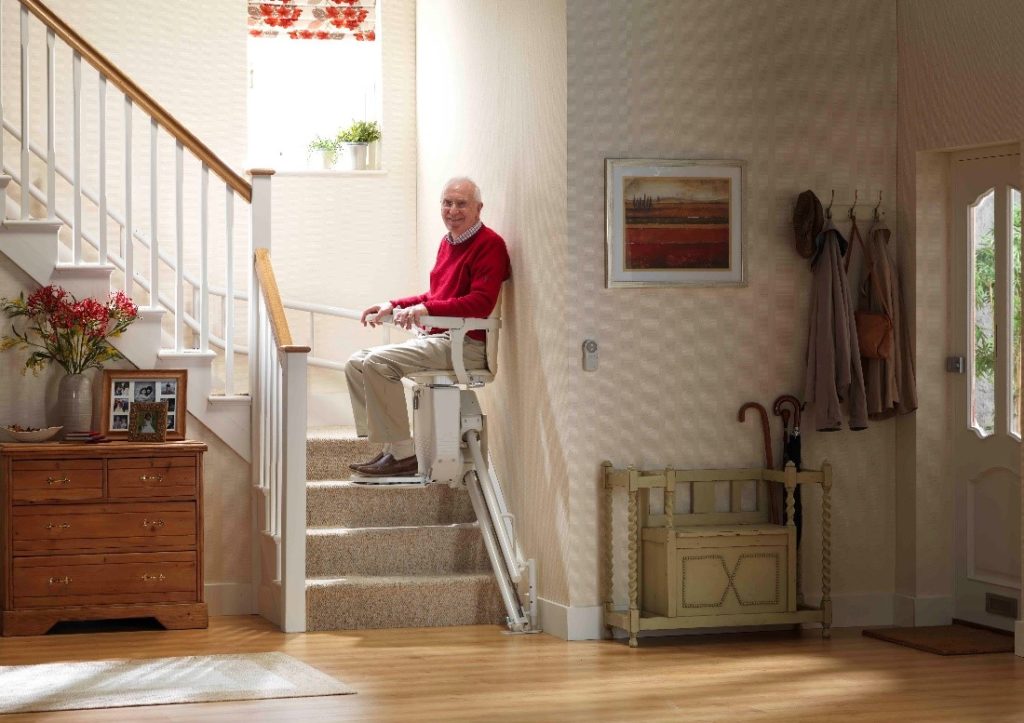Live Safer at Home: Tips for Preventing Falls
As our loved ones age, it’s natural for them to feel a little less steady on their feet. While the loss of balance can be a symptom of a larger issue, it’s important to do all that we can to prevent falls.
Written by stannah

When it comes to ageing, our thinking is often reactionary. Much of the narrative is set around what to do if X, Y and Z happens. So often, we look for answers after the problem has occurred and there is no other choice but to act. Instead of waiting for something to go wrong, let’s consider how one of the most daunting challenges facing our older loved ones can be prevented.
For anyone ageing in place, the risk of falling has to be a key consideration. According to the National Council on Aging (NCOA), one in four older Americans falls each year, making it the leading cause of injuries, both fatal and nonfatal, for adults aged 65+. Often, these are debilitating, life-changing events. Head injuries, fractures and internal damage resulting from a fall can dramatically impact a person’s health and prevent them from ageing at home. But despite the staggering number of falls that older Americans suffer each year, a vast majority of them can be prevented. Preventing falls is critical to any long-term plan to age in place, and whether you’re planning for yourself or taking care of a loved one, there are steps you can take today to ensure a safer environment and reduce the risk of falling.
Fall Prevention: Where to Start
The NCOA identifies several key areas that should be addressed in your fall prevention plan:
- Balance and gait: As we get older, it’s natural for our balance to deteriorate. Recognising these changes within ourselves and our family members is key to preventing falls.
- Vision: If you’re struggling with poor vision, it’s important to take the appropriate steps to ensure your safety. Obstructions and tripping hazards scattered throughout your home can be easily missed and lead to falls.
- Medications: Certain medications can come with dangerous side effects such as dizziness or dehydration. You should be aware of how your medications affect you and use caution when taking them.
- Environment: The physical characteristics of your home can have a major impact on fall prevention. Steep stairs, icy walkways and unsafe bathrooms can all lead to falls.
- Chronic conditions: Conditions like diabetes, stroke or arthritis can have a major impact on your balance and lead to falls. With over 80% of older adults suffering from at least one chronic condition, symptom management and awareness are critical.
6 Steps to Preventing Falls: How to Help Your Loved Ones
Now that we’ve identified some key factors in fall prevention, let’s take a closer look at the NCOA’s six steps and what you can do to help prevent falls for your older loved ones.
1. Enlist their support in taking simple steps to stay safe
First things first, sit down and have an open and honest conversation. It may be difficult at first, but it’s important to respect seniors’ personal agency and make sure that they’re an active participant in their care. After all, you can’t be there all the time. If you encounter some resistance, try showing them a list of debunked myths about ageing. Work together and develop a plan based on the individual’s needs.
2. Discuss their current health conditions
As mentioned earlier, chronic health conditions can have a profound impact on balance and lead to in-home falls. How is your loved one managing their health? How do their symptoms impact their everyday activities? Could a change in medication lead to fewer side effects and improve their general stamina? Regular check-ups and regular discussions with their healthcare professional can go a long way towards reducing the risk of falls.
3. Ask about their last eye check-up
On the subject of regular check-ups, what happened at their last eye exam? Has their vision changed significantly? Is a new prescription needed? Special lenses and prescriptions like tint-changing lenses and bifocals can actually be dangerous when entering the house or traversing the stairs. If your loved one’s vision is particularly poor, it might be a good idea to consult a low-vision specialist.
4. Are they “furniture walking”?
Have you noticed your loved one using the furniture or walls in their home for balance? Do they lean on you to steady themselves or have trouble getting up from a seated position? If so, consider consulting a Physical Therapist. A certified PT can greatly improve your loved one’s balance and offer exercises and suggest proper assistive devices, like a walker, to help.
5. Discuss medications
If they’re having trouble keeping track of their medications, suggest that they get in touch with their physician and look into some options. There are many dispensers and other organisational tools to help make sure the right medications are taken on time. Once they’re sure that their medications are being taken properly, consider their effects. If possible, try to avoid medications that cause dizziness and balance issues. Your loved one should always have an open dialogue with their physician regarding medications and their impact.
6. Do a walk-through safety check and address any issues you find
Look around their home for everyday hazards. These can be as simple as getting rid of skid carpets or installing grab bars. Generally, you should increase lighting throughout the house, especially near the stairs. The bathroom can also be a dangerous area for falls. A well-placed grab bar or a shower chair and hand-held shower head can make all the difference. Consult with an Occupational Therapist for more recommendations on equipment they may help prevent in-home falls.

Going Further
At Stannah, we’re here to help with the stairs. If they’re becoming difficult for your loved one and either of you is concerned about a fall, consider the benefits of a stairlift. This would allow your loved one to safely travel up and downstairs and enjoy the full use of their home, without the risk of falling on the stairs. We’ve talked a lot about ways we can make our loved ones’ homes safer; a stairlift could be one more way to prevent falls and help those you care for age in place.
